Are you searching for the best wood for cooking utensils? Look no further!
In this article, we will guide you through the top choices, each offering it’s unique qualities.
From the durable and sustainable bamboo to the smooth and elegant olive wood, we’ve got you covered.
Discover why beech, cherry, and walnut are also excellent options.
Get ready to elevate your cooking experience with utensils made from these exceptional woods.
Let’s dive in!
Key Takeaways
- Bamboo and Beech are durable and sustainable choices for cooking utensils.
- Olive wood is highly regarded for its durability and beautiful grain patterns.
- Cherry wood enhances the cooking experience with its strength, durability, and natural antibacterial properties.
- Walnut wood is an ideal choice for superior quality and performance, with its durability, tight grain structure, and natural antibacterial properties.
Bamboo
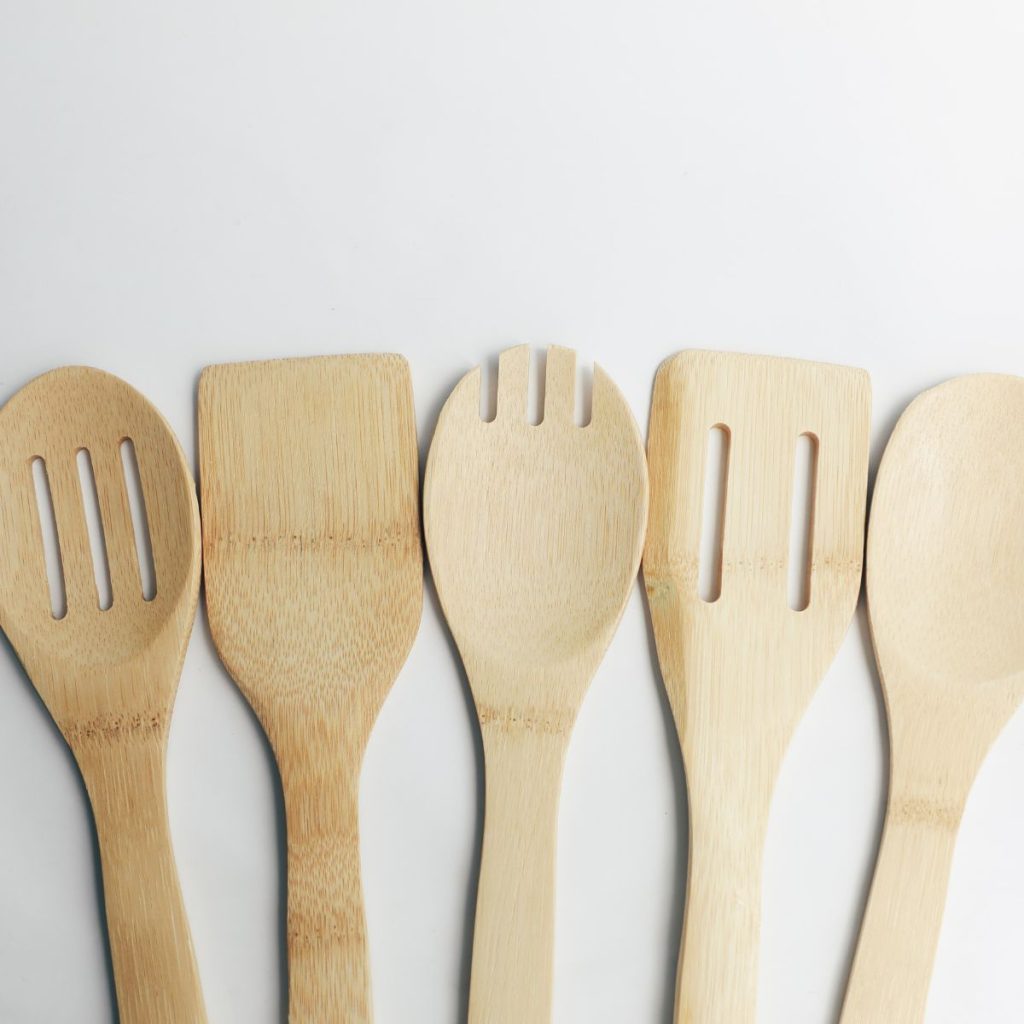
Bamboo is an excellent choice for crafting cooking utensils due to its durability, sustainability, and versatility.
This remarkable plant is known for its strength, making it ideal for utensils that require durability in the kitchen.
Bamboo isn’t only strong, but it’s also highly sustainable. It grows rapidly, reaching maturity in just a few years, and requires minimal resources to thrive.
This makes it a more eco-friendly alternative to other types of wood.
Additionally, bamboo is incredibly versatile. It can be shaped into various utensil designs, allowing for a wide range of options to suit different cooking needs.
Whether you need a spatula, spoon, or chopsticks, bamboo can be easily fashioned into the perfect tool for your culinary endeavors.
It is definitely a top runner for the best wood for cooking utensils.
Beech
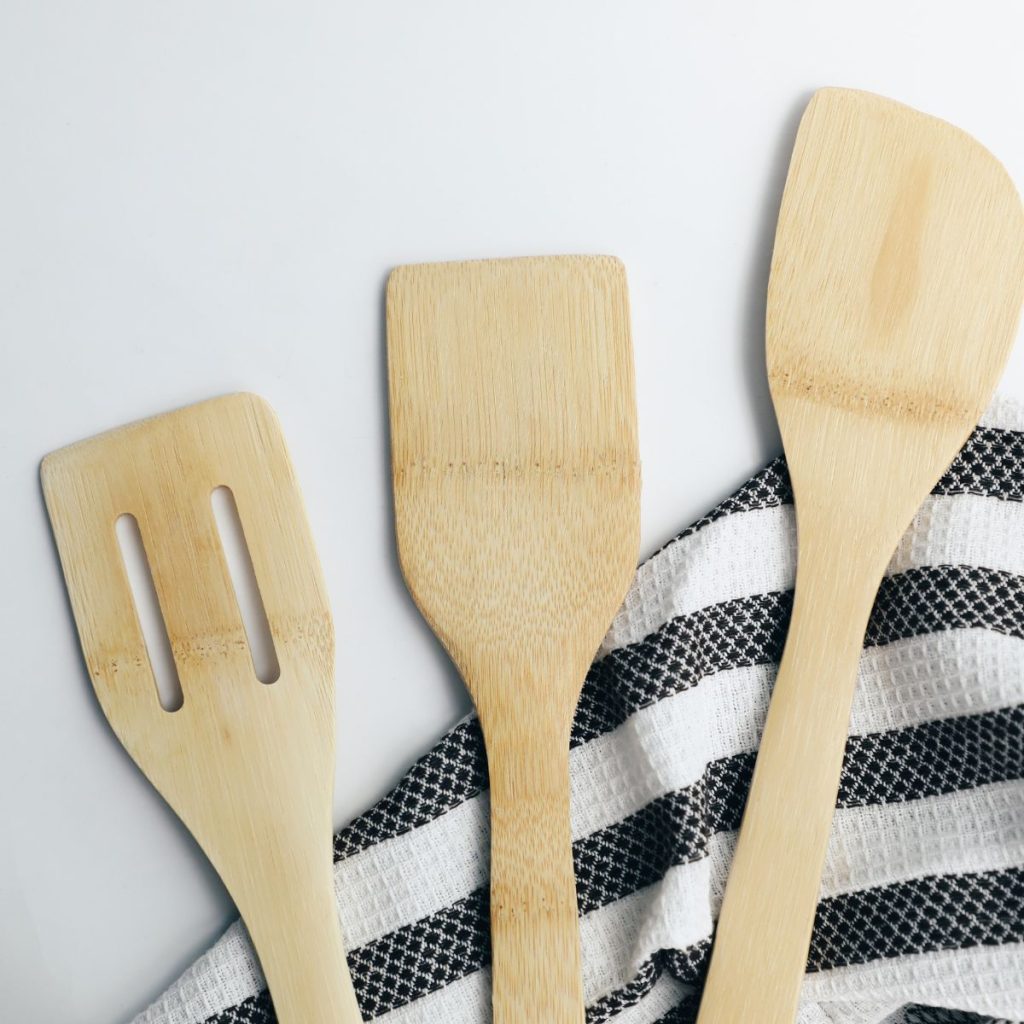
When considering the best wood for cooking utensils, beech is a popular choice due to its durability and versatility.
Beech wood is known for its strength and resistance to wear and tear, making it an excellent option for utensils that are used frequently in the kitchen.
Here are three reasons why beech is a top choice for cooking utensils:
- Natural antibacterial properties: Beech wood has natural antibacterial properties, which means that it’s less likely to harbor harmful bacteria compared to other types of wood.
- Heat resistance: Beech wood can withstand high temperatures without warping or cracking, making it suitable for various cooking methods, including stirring, flipping, and serving hot dishes.
- Smooth texture: Beech wood has a smooth and even grain, making it comfortable to hold and easy to clean.
Olive
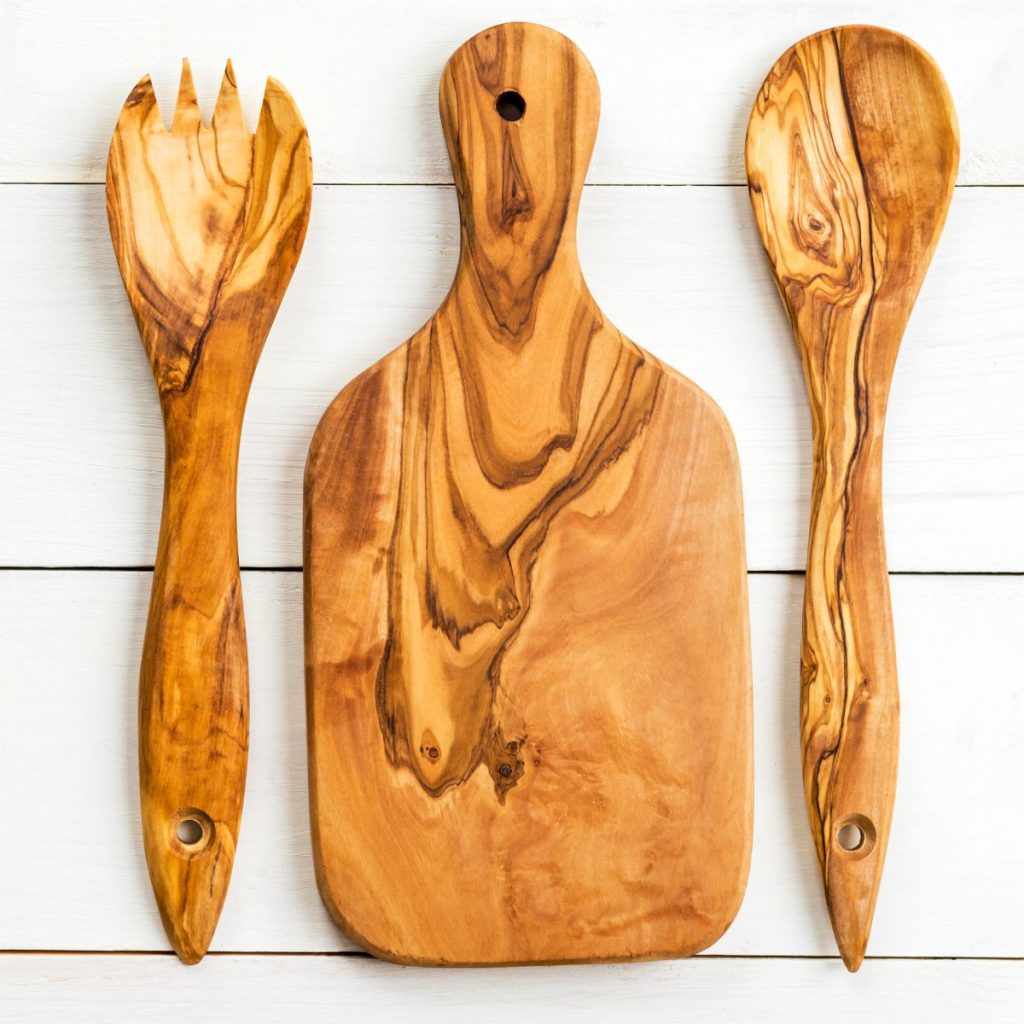
Continue the discussion on the best wood for cooking utensils by exploring the properties of olive wood.
Olive wood is highly regarded for its durability and beautiful grain patterns.
It’s a dense hardwood that’s resistant to water damage, making it ideal for use in the kitchen.
Olive wood utensils are known for their smooth and polished surfaces, which is important for maintaining food hygiene.
The natural oils present in olive wood make it naturally resistant to bacteria growth, further enhancing its suitability for cooking utensils.
Additionally, olive wood has a mild and pleasant aroma that can enhance the flavors of the food being prepared.
Its strength and longevity ensure that olive wood utensils will last for years, making them a great investment for any kitchen.
Cherry

To enhance your cooking experience, consider using cherry wood for your utensils. Cherry wood offers several benefits that make it an excellent choice for cooking utensils:
- Durability: Cherry wood is known for its strength and durability, making it perfect for utensils that need to withstand everyday use in the kitchen.
- Natural Anti-Bacterial Properties: Cherry wood has natural anti-bacterial properties, which means it helps prevent the growth of bacteria on your utensils, keeping your food safe and hygienic.
- Beautiful Aesthetic: Cherry wood has a rich, reddish-brown color with a smooth grain pattern, making it visually appealing. Using cherry wood utensils can add a touch of elegance to your kitchen.
By choosing cherry wood utensils, you not only get a durable and safe tool for cooking but also an aesthetically pleasing addition to your kitchen arsenal.
Walnut
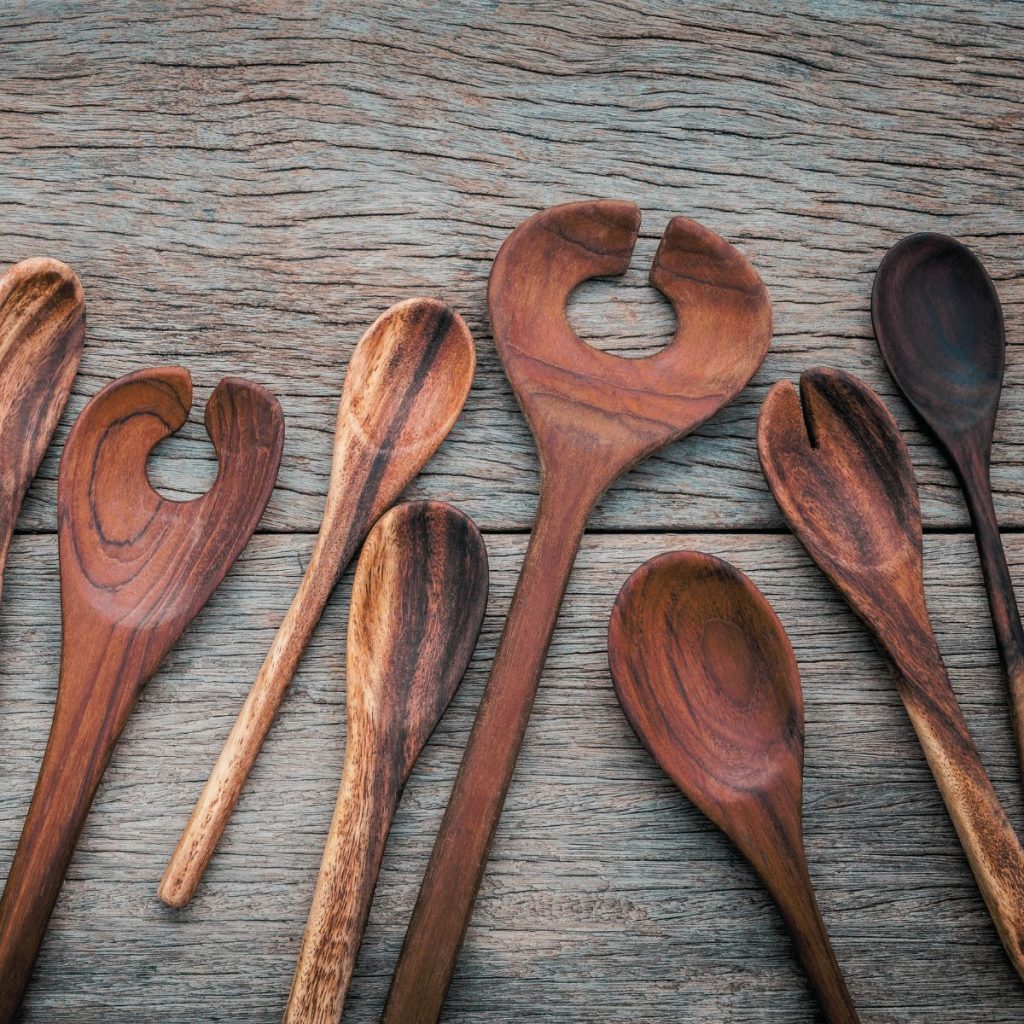
For superior quality and performance, walnut is an ideal choice of wood for your cooking utensils.
Walnut wood is known for its durability, making it perfect for utensils that are used frequently and exposed to heat.
Its tight grain structure prevents the absorption of moisture, which reduces the risk of warping or cracking.
Walnut also has natural antibacterial properties, making it a hygienic option for your kitchen tools.
Additionally, walnut wood has a beautiful dark brown color and a smooth, polished finish, adding an elegant touch to your cooking experience.
Its dense nature ensures that it will withstand the test of time, providing you with reliable and long-lasting utensils.
When it comes to quality and performance, walnut wood is a top choice for your cooking utensils.
The Best Wood for Cooking Utensils: Conclusion
When considering the best wood for cooking utensils and considering factors like quality, durability, sustainability, aesthetics and maintenance, it all comes down to personal choice. Whether opting for the durability and sustainability of Bamboo and Beech, the timeless beauty of Olive wood, the strength and antibacterial properties of Cherry wood, or the superior quality of Walnut wood, each wood type offers a unique set of characteristics to enhance your kitchen experience.
Ultimately, investing in high-quality wooden utensils not only elevates your cooking space aesthetically but also ensures a lasting and enjoyable culinary journey. Choose the wood that resonates with your preferences, and let your kitchen utensils become an extension of your personal style and culinary expertise.


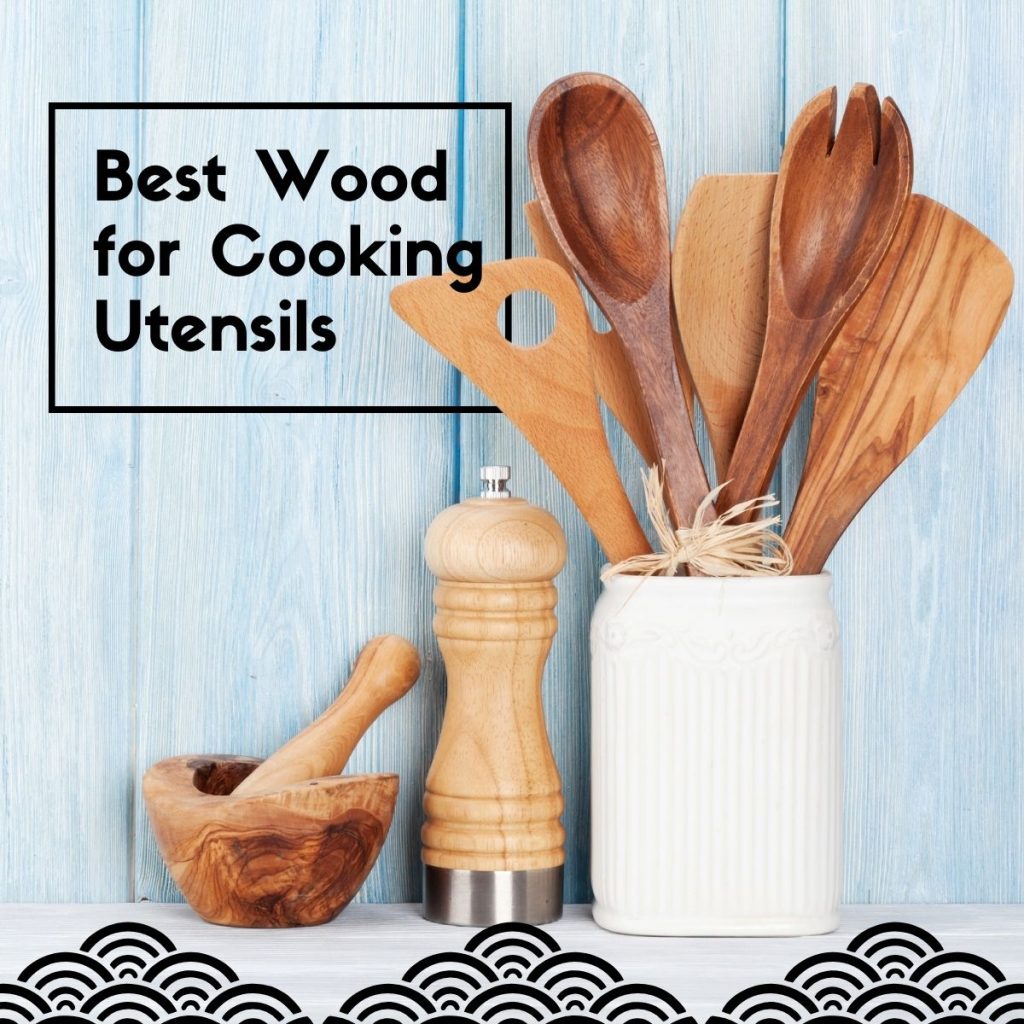



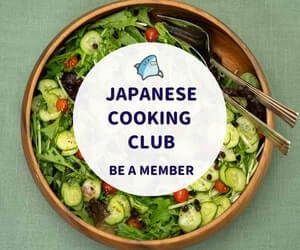



Konnichiwa! (Hello!) I'm Pat Tokuyama, a Japanese tofu cookbook author, who travels for music, food, and adventure. If you like Japanese tea, checkout some of the newestorganic japanese tea, matcha bowls and noren and more!
** Curious about the Plant Based Japanese Cooking Club? ** Learn more here!